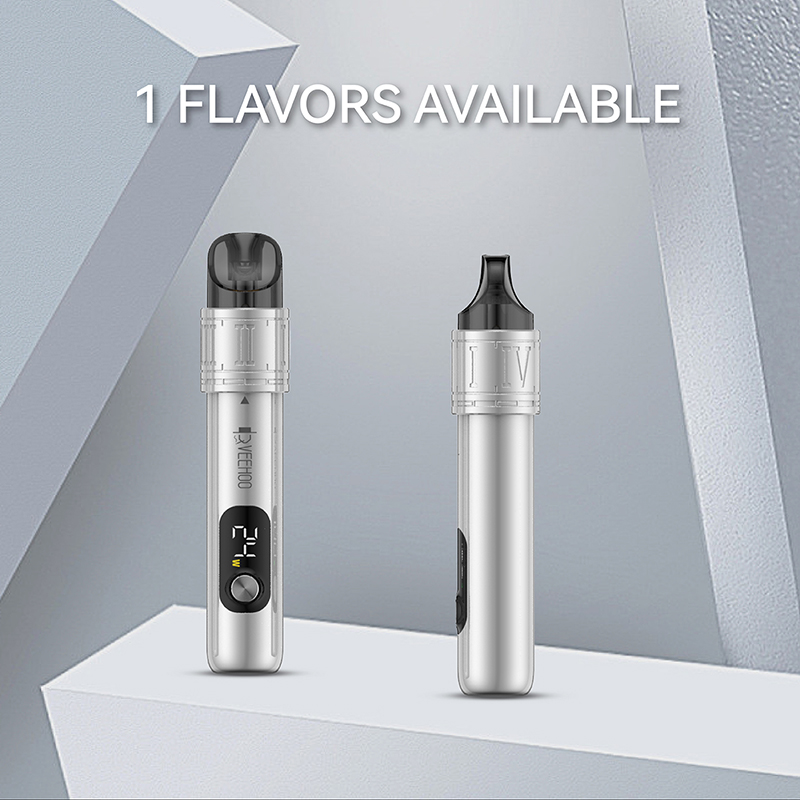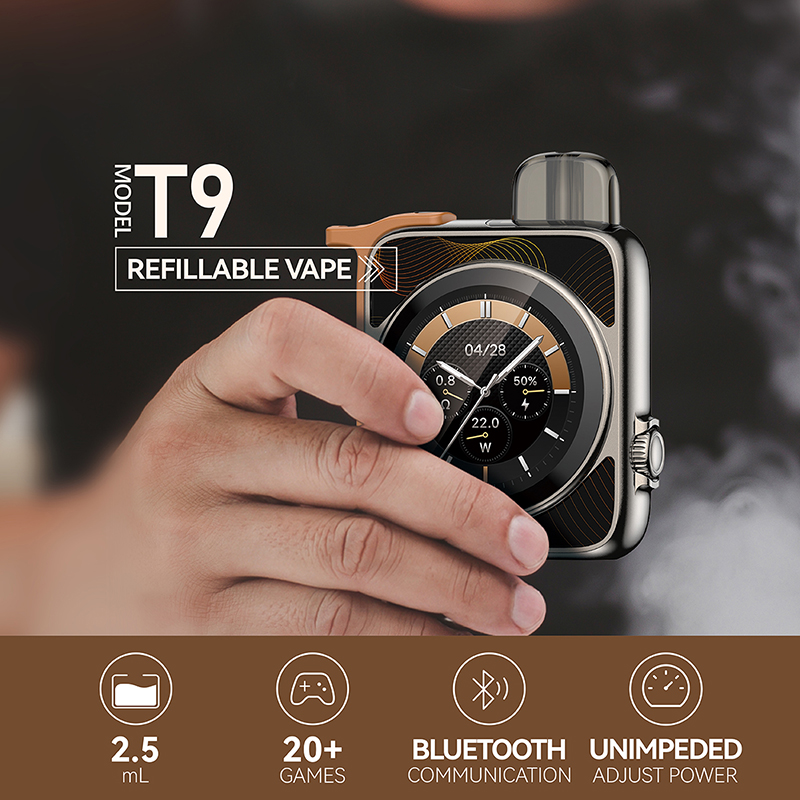Located in the emerging consumer hotspot e-cigarette market, single-use disposable e-cigarettes have quickly swept the world because of their convenience, affordable prices and diverse flavors. However, this product, which is regarded as a “smoke-free alternative”, hides the hidden dangers of high toxic metals. A study released by the University of California, Davis in 2025 pointed out that the content of toxic metals such as lead, nickel, and antimony released by some disposable e-cigarettes exceeded that of traditional cigarettes, even up to 20 packs, which aroused high vigilance from academia and regulators.
The Rotterdam Great Wall Study in the United States also found that the average daily inhalation of lead in some disposable e-cigarettes exceeded the lead released by 20 packs of ordinary cigarettes in a day. What is more worrying is that among the seven popular products tested in the study, the heavy metal concentrations of four have exceeded the safety threshold of neurotoxicity and respiratory damage, and the chromium and antimony content of two of them have reached potential carcinogenic levels. These metals will not only be deposited deep in the alveoli, but may also enter the circulation with the respiratory system, further causing long-term damage to the brain and other organs.
Heavy metals may cause long-term damage to the nervous system after inhalation. Lead and nickel can easily cross the blood-brain barrier in the human body. After ingestion, they can interfere with neurotransmitters and damage nerve myelin, causing memory loss, decreased attention, abnormal behavior and other problems, which are particularly risky for teenagers. In addition, antimony has also been identified as a potential carcinogen. Long-term inhalation can accumulate in lung tissue, causing respiratory diseases such as lung function decline and chronic cough. According to an experimental study on disposable e-cigarettes, the risk of respiratory cancer from chromium and nickel is significantly higher than the acceptable level.

These risks are not hypothetical. Global studies and surveys have confirmed that the metal parts of disposable e-cigarette heaters, such as coils and solder joints, will gradually corrode under high temperature conditions, and metal particles will be inhaled into the body with aerosols. Public health agencies have long been concerned about these phenomena. Environmental Health Perspectives pointed out that many e-cigarette devices release “at least a dozen toxic metal concentrations” higher than safety standards. A toxicology review at Nixon University found that e-cigarette vapor can lead to accumulation of metals in the central nervous system and disrupt the metal balance in the body, causing potential neurodegenerative diseases.
For the respiratory system, a series of recent studies have shown that e-cigarette spray can generate new decomposition toxic substances, such as aldehydes and volatile organic compounds, which aggravate respiratory irritation and lung inflammation. Especially when the heating temperature is too high, not only will the aldehydes surge, but the metal release will also be more obvious, further increasing health risks.
Experts, doctors and public health scholars have issued warnings: convenient and easily available disposable vapes do not mean safety. If these heavy metal vapors are inhaled for a long time, it may not only cause irreversible brain and lung damage, but also be ready to cause a public health crisis. Young people, especially teenagers and pregnant women, are in a highly sensitive period and are more vulnerable.
Faced with this situation, regulators have begun to respond. The UK implemented a sales ban on disposable e-cigarettes in June 2025, aiming to curb youth exposure. Although the US FDA has long requested authorization, a large number of overseas disposable devices have flowed into the United States through online platforms, and the regulatory effectiveness has lagged behind. In Europe, the scientific community and policymakers have called for updating testing standards, strictly screening metal precipitation, and restricting the circulation of disposable products on the market.

However, this does not mean that the e-cigarette industry should be completely denied, especially those brands that are at the forefront of science and safety. VEEHOO is a typical representative. As a brand certified by the EU TPD (Tobacco Products Directive), VEEHOO is committed to building multiple safety technology barriers. Its third-generation Atomax intelligent temperature control chip monitors the heating temperature in real time and stabilizes it between 180°C and 210°C, effectively avoiding the precipitation of aldehydes and heavy metals produced by high temperatures.
Not only that, in product quality inspection, VEEHOO uses food-grade PG, VG and flavors, and conducts heavy metal and radioactive material tests before leaving the factory to ensure that the liquid does not contain metal impurities such as lead, nickel, and chromium. They also cooperate with European public health agencies through the VEEHOO Academy initiative to popularize nicotine knowledge, smoking cessation techniques and use safety education to enhance users’ risk identification capabilities.
VEEHOO’s D2 disposable e-cigarette has passed TPD certification and has the advantages of stable battery, controllable e-liquid supply, and reasonable flavor release. It not only meets the needs of adult smokers to switch to low-harm alternatives, but also does not mislead minors. Its T8 replaceable cartridge device is also made of alloy material to reduce the release of unstable metals, reflecting the brand’s exploration of product sustainability and safety.
Compared with those disposable products that are unlicensed, uninspected, uncontrolled in heating, and volatile and toxic, VEEHOO, which meets the standards, has been tested, and has an intelligent temperature control mechanism, undoubtedly has a significant advantage in safety. The brand actively cooperates with supervision and promotes safety education, and also provides a responsible industry example for the public and the government.
Of course, relying on a certain brand alone is far from enough. To address the heavy metal problem of disposable e-cigarettes, systematic policy and social efforts are still needed. Experts suggest that the authorities should speed up legislation and standard setting:
With the publication of evidence by institutions such as Davis University, and in-depth reports revealing that “the toxic metals inhaled by young users may have far exceeded safety standards”, the pace of supervision in various countries can no longer be neglected. However, we must not take the extreme measure of “banning all e-cigarettes” to deprive adults of a healthy way to get rid of tobacco.

If we can implement differentiated policies – strictly control disposable devices, standardize heavy metal testing, promote temperature control safety technology, and encourage reliable manufacturers such as VEEHOO to enter the market prudently, we can achieve a scientific, reasonable and healthy strategic balance.
In the conclusion, the analysis is as follows: The heavy metal problem in disposable e-cigarettes is enough to cause nerve, respiratory and even cancer risks, and the harm is real and far-reaching. Scientific research and real cases reveal that they are not safe alternatives. Supervision and society should attach great importance to them. At the same time, brands such as VEEHOO that have passed TPD certification, implemented temperature control rules, and strengthened quality inspection and education have shown the hope of sustainable development of the industry. Only when supervision responds quickly, technology keeps up with the pace, and industry self-discipline and public education go hand in hand can we protect the next generation and give adults an additional low-harm option on the road to quitting smoking.
Tags: ceramic atomization core, electronic hookah, flavored e-cigarette, veehoo vape